#Calusa tribe
Text
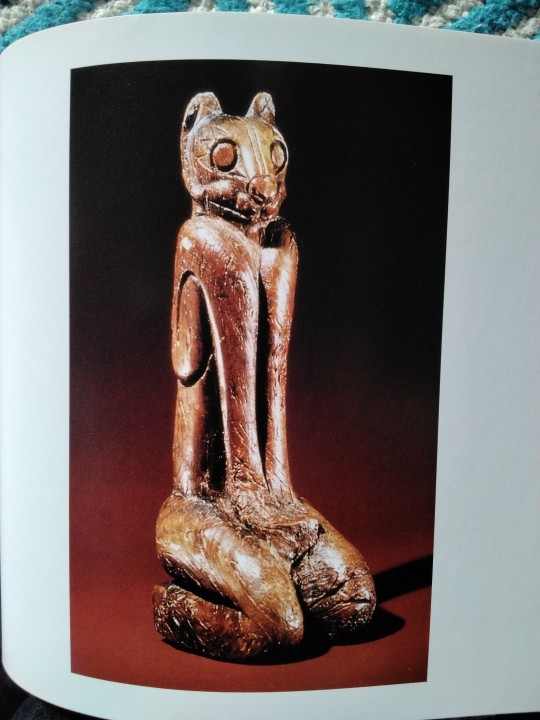
Key Marco cat, c.1600s.
Region: Florida.
This tribal representation of a kneeling cougar was part of an extraordinary archaeological find on Marco Island in 1896. This area of south-west Florida was originally populated by the Calusa Indians – hunter-gatherers who are known to have been fierce warriors. They fished in the estuaries and have been dubbed ‘The Shell People’ because of the great mounds of shells that have also been found here. They were scattered and disappeared soon after the Spanish explorers came to the area.
The Calusa were skilled artisans, and more than 1,000 pieces were discovered at the Key Marco site at the northern tip of the island, including masks and weapons, ceramics, bone and shell artefacts, some of which date back to the sixth century CE. The site was discovered by Captain W. D. Collier and excavated by Frank Hamilton Cushing. Dating from the seventeenth century, the cat is about 15cm (6 in) high and is in remarkably good condition. It is carved from wood and represents a feline/human figure. The anaerobic properties of the mud had preserved it for centuries.
Source: ‘Folk Art’, Susann Linn-Williams, pp. 154-55.
#Native American#traditional crafts#Marco Island#Florida#Calusa tribe#The Shell People#shells#Captain W D Collier#Frank Hamilton Cushing#folk art
3 notes
·
View notes
Text
Swamp Witch Travels: The Everglades
The Seminole War that never ended, a charm to Split a Storm and an Ancient Island. For centuries, the Everglades has been the object of wonder of many influential Floridian figures who each recognized its immense beauty and power. This River of Grass is a major center of life and biodiversity, as well as mysteries and Spirits uncharted, but will it still be around for the Swamp Witches of tomorrow?
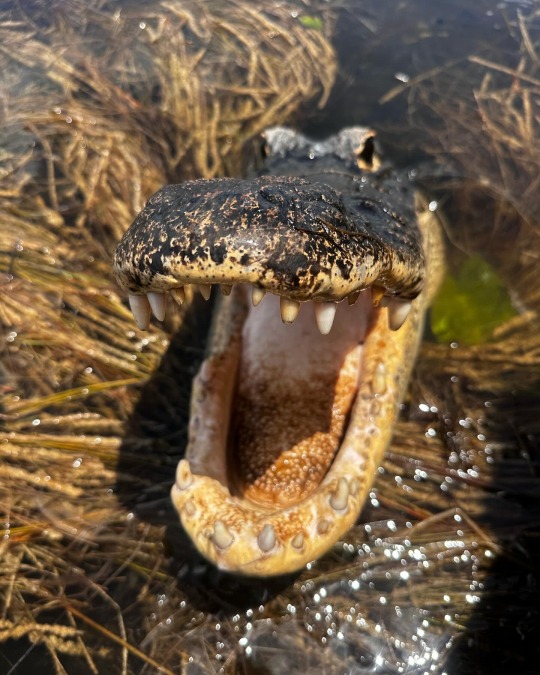
The Everglades is going to shatter all of your preconceived notions about Swamps. It is a place of great power and duality. On one hand, this aqueous Land is covered in sparkling, clear, MOVING water. This water is the Life and Blood of the state, flowing from the Heart of the Everglades, Okechobee (Big Lake) The health of this ecosystem in turn affects the entire country. On the other hand, a place of Danger, Death and Rot, but for the purpose of Cleansing and Purification (not just rot for rot’s sake). As the water flows through this vast ecosystem, it is cleared of pollutants by plants and limestone while washing away scars left by man on this Land, until all is returned anew. It is a multifaceted, firm but gentle Spirit.
The Everglades is a union, a pact almost, between the Land and the Water to form the Swamp we know and love.
I am no stranger to the Glades. I was born and raised in the western Everglades, in the Big Cypress water basin. Fakahatchee and Picayune Strand were favorites of my parents as I was growing up, and we lived way out in the woods anyways so I always feel at home in the Glades. Many of my Spirits who are intrinsically tied to me, one might call a Spirit Guide or Angel, feel connected to Swamps and places where Water and Land converge. The Everglades is my home, but it is also a Spirit Ally, and a sacred place to the modern Indigenous Peoples of Florida, including the recognized and unrecognized Seminole and Miccosukee.
(PSA: this post will likely be part of a series only scratch the surface of the intricacies related to the Glades.)
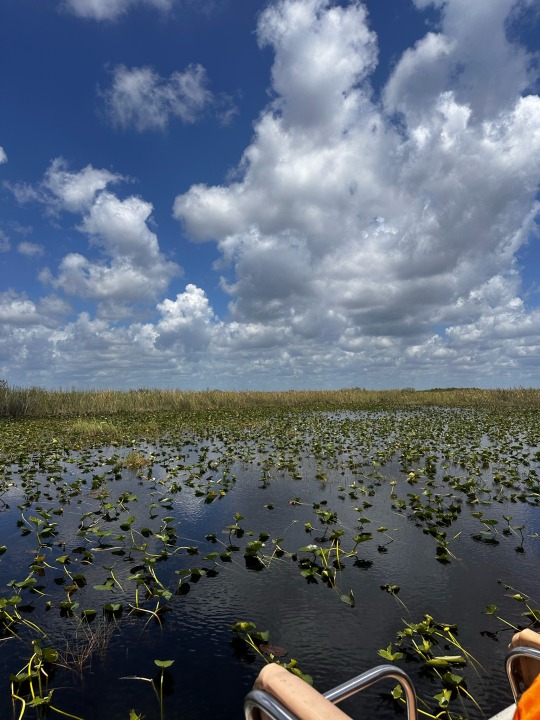
Pa-Hay-Okee, “Grassy Waters”
Pa-Hay-Okee is the Seminole-Mikasuki name for the Everglades. I was blessed to be able to take a trip to see the Real Florida when I took an airboat ride with Buffalo Tiger Airboats, owned and operated by Betty Osceola. Betty is a conservationist and member of the Miccosukee tribe, located in the Eastern Everglades. The Seminole and Miccosukee are the descendants of various groups of Florida’s Original People from all over the state. The relationships and history of Florida’s Indigenous groups is complex. Before colonization and to this day we have had multiple groups who all have different beliefs, cultures, origins, and relationships. Today, we have various groups who are federally recognized as well as both Traditional and Reconstructionist groups who don’t seek recognition from the government, the most well-known being the Traditional Seminoles in Big Cypress.
Certain aspects of Seminole culture predate colonization, like the Chickee and some hunting techniques, while others, mainly linguistic and spiritual, are the result of groups joining together or adapting to new circumstances, such as patchwork. Many of the Seminole can trace their ancestry to groups in North Florida and surrounding states. These groups would live in various parts of the State, including the Everglades, at different times of the year following routes taken by seasonal migrations of game and water.

These people were forcibly removed, pushed South or murdered so their land could be taken in a conflict known to the United States as the First, Second and Third Seminole Wars. As they were pushed South, they encountered and assimilated various remaining populations of Pre-Columbian groups like the Calusa and Tequesta.
If you ask the modern members of these tribes, they will tell you it was a single war that is still being fought to this day, although with lawyers instead of weapons. You see, the Seminole and Miccosukee still have never signed a treaty with the US, and continue to have to fight for their Sovereignty and Land to this day. This has earned the Indigenous People of Florida the title of the Unconquered Peoples. Today, the tribes maintain traditional ways while also dealing with ever-encroaching settler beliefs and people. They still live off the land, but through the lens of eco-tourism most often rather than through subsistence living like many elders lived in their youth.
On my airboat trip, I got to stop and walk around Tear Island, a place where two Indigenous families began living in the 1800s and then abandoned in the 1920s. Being on these far off Islands, surrounded by the swamp and only accessible by boat, is where I feel most connected to my own Indigenous Taino ancestors, who would have traversed this same place but in a dugout canoe rather than an Airboat. The spirits of generations of people who lived and passed on are still here, within the water and trees, but also gathering around the cooking chickee when a fire is lit by their descendants.
High Tide at Chokoloskee
Known as the Western Gateway to the Everglades, we have Everglades City. It borders the Big Cypress Preserve and is a great place to stop to visit the Museum of the Everglades. The first settlers came here in the 1800s, it was incorporated in 1923. Past Everglades though, lies Chokoloskee. An Island with a Seminole name meaning ‘Old House’. This Island was only reachable by boat until 1956 when the bridge was built. John Weeks, the first permanent settler of Naples was one of the first settlers here as well. Before that, it was inhabited by the Calusa for more than 1,500 years.

Stop by HavAnnA Cafe on your way to the southern tip of the Island where you’ll find a large red building on stilts. This is the Smallwood Store. Founded in 1906 by Ted Smallwood, this store was one of the only places Indigenous and White Floridians could go to trade for necessities. Ted Smallwood was a well-known ally of the Seminole and Miccosukee peoples, even learning to speak the language. Today, his granddaughter runs the store which is a museum and gift shop. There is even a replica of Ted himself, pictured above.
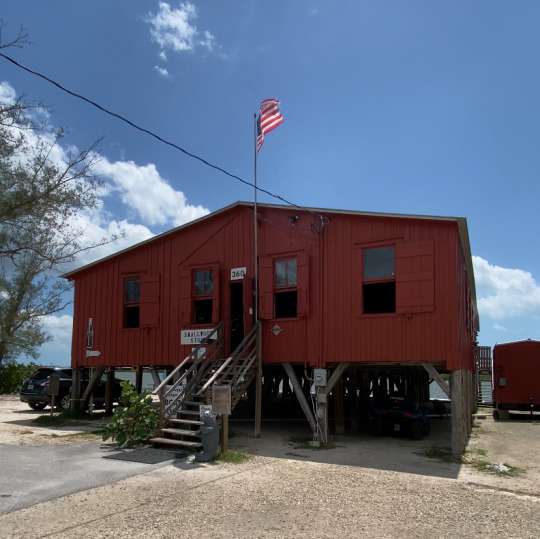
This history of this store and island is long, and tragic. A nearby massacre during the ‘Third Seminole War’ caused the remaining Indigenous people here to flee the Island. Later on, a famous murder of a well known criminal happened right outside the Smallwood Store. You can read more about both, and the 100 year anniversary of the building being raised here.
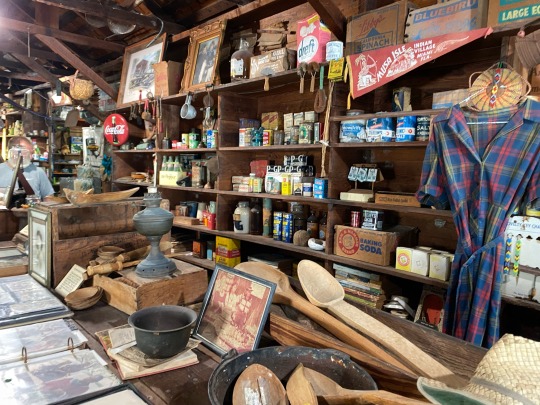
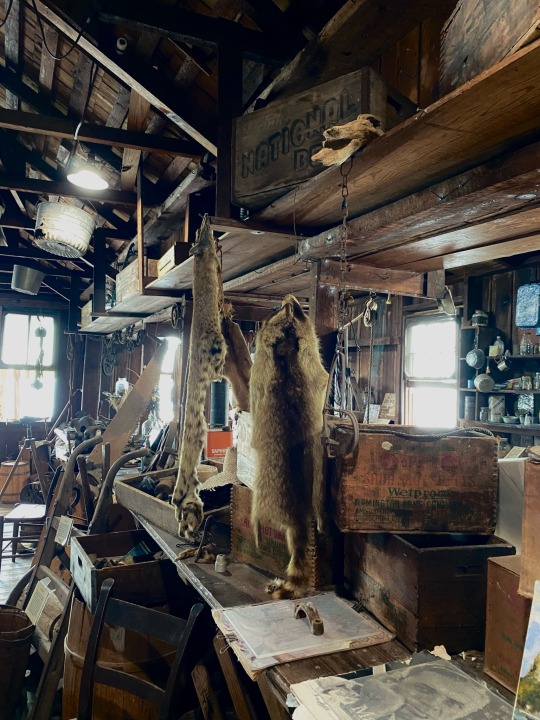
This is also a great spot to see where the fresh water of the Everglades meets the saltwater of the Florida Bay. Definitely give this place a visit.

Splitting Storms: An Indigenous Folk Protection Charm
For some time now, I have noted the striking similarities between Seminole and Taíno beliefs around Twins and Weather. We even share a simple protection charm to ward off a bad storm I will share to you all.
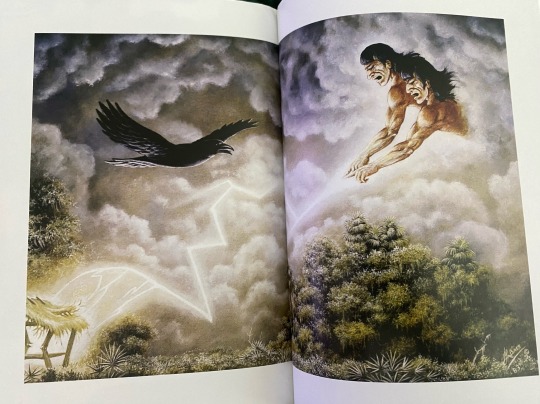
In Seminole belief, Twins are intrinsically tied to the weather. Many elders believed that keeping twins together can be dangerous, and they should be raised separately. To them, one is Thunder and the other is Lightning, even going as far to saying that having two twins in the same chickee can cause it to be struck.
In Taíno myth, we have two sets of twins associated with weather. Boinayel and Marohu are the Cemi related to the Wet and Dry seasons, Boinayel being the Raingiver and Marohu literally meaning “Without Clouds”. Then we have the ones who I would say share similarities to the Seminole Twins, Coatrisque and Gautaubá. These are Twin sons of the violent aspect of Atabey, known as Guabancex, Cacique of winds. Coatrisque is torrential rains, while Guatauba is Thunder and Lightning himself.
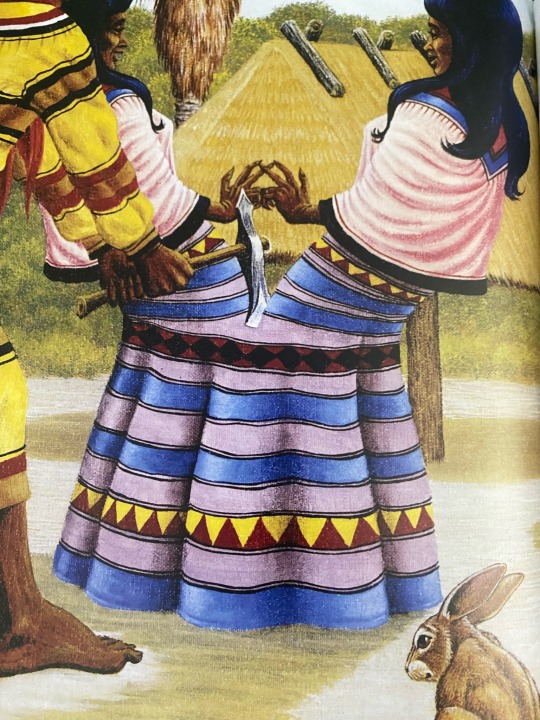
The charm is very well documented in both groups, as well as many others, and very straightforward. It’s the underlying belief that makes these two charms so similar. The linked article from earlier even includes a brief explanation of it.
Basically, when you know a big storm is coming, you want to place an axe in a spot on the front of your house, usually on a piling or piece of the roof that extends below the ground. Tie it down if you wish, for the winds. If you can, do it so the blade looks like it is coming down on the storm. The goal is to split the storm so it goes around the house. If we look at the myths, it’s clear the axe is there to split the Twins from each other, forcing them to go around the house, leaving it protected.
In the Caribbean, in practices like Lúcúmí and Palo Monte, we see the use of Matari, ‘Thunder Stones’. Genuine thunder stones from the Caribbean are actually said to be relics of Taíno axes, shaped like a tear drop almost, either passed down or found and used for various purposes, one being to ward off Lightning and Thunder!
Will Your Kids Know the Glades?
The Everglades are vital to my spiritual practice and lifestyle, as well as that of thousands of other Floridians. Even if you don’t live in the Swamp, its health affects the entire country.
Today, the dangers facing the Everglades are almost as abundant as the dangers inside it. Overdevelopment threatens the entire state. Just like we saw with Split Oak Forest recently. Environmental Protections seem to mean less and less because they don’t have the teeth to defend themselves. Included in these threatened protections is the sovereignty of the Seminole and Miccosukee Tribes, who just had to fight to keep Big Cypress as a preserve so they can continue their traditional use. They are fighting to hold onto their Land to this day.
All while threatening the Traditional Use by Indigenous Peoples, they continue to allow oil drilling even approving new projects within Big Cypress. The Army Corps of Engineers also heavily harms the environment every year through mismanagement of Okechobee and of the water levels within the Glades. It is up to everyday Floridians to fight to protect and better manage this precious natural resource before its gone forever. It is up to Witches all over to be stewards of our Lands, wherever that is. For us Florida Witches, we need to organize, donate and hex our politicians.
Luz 🕯️
#witchcraft#florida#bioregional animism#bruja#brujeria#florida witch#santeria#swamp witch#witch#traditional witchcraft#folk witchcraft#folk magic#folkloric witch#folk witch#espiritismo#santería#caribbean#everglades#animism#taino spirituality#taino#indigenous#cuban#witches#seminole#miccosukee#big cypress
19 notes
·
View notes
Text


1
Even those of us in what appear to be peaceful countries are deeply involved in a war. It is a social and a political war. It is a war of ideology versus freedom of thought. It is a war of industrialism against healthy environments. It is a war between the included and the excluded, between the individual and the constraints imposed by impersonal institutions.
The vast majority of the world’s population consists of defeated peoples in this war. In fact, we are more than just defeated. We are kept: kept in fear, kept in awe, kept out of touch with each other and the earth that gives us life. It has been said that our chains are long and our cages big, yet we are still prisoners. Coercion is everywhere, including the necessity to sell our labor for a wage, forced obedience to laws, conscription in imperial armies, and compulsory moralities and schooling.
The occupying physical forces are essentially the police and the army. Over the centuries, we’ve internalized much of the values and ideas of the conquerors and have thus been assimilated into the ways of the obedient and the domesticated. But I’d like to explore our physical occupation, not the various skins that we must shed and the fears we must lose.
If people want to claim space, then they have to be prepared to fight and defend it. This space could be permanent (a liberated region or village) or temporary (squats, wilderness camps, legally and illegally built shelters or autonomous neighborhoods). It could be based in village or regional secessionist movements, access to land by popular movements or indigenous assertion over traditional territories.
Those of you familiar with the events in Kahnesatake, a Mohawk reserve outside of Montreal from which the cops were physically chased out of town a while ago, are aware of how successful an organized martial action can be. Canadian anarchists and other insubordinates have an incredible amount of insight and inspiration to glean from that event. People can claim space if they get organized and aren’t afraid to lose a few teeth.
With this in mind, perhaps a look at history generally will help us discover how others in our predicament have successfully organized themselves martially. There are countless examples of rebels organizing themselves and winning a few battles.
Official history is written by the conquerors. Their self-congratulatory folklore is that we (rebels) have always lost because the conquerors were superior (and thus had superior weapons). Most of us assume that this is true, so we might as well not even try a martial approach because we’re sure to lose. But this isn’t the case. In North American history for instance, the dishonest image of the technologically advanced Europeans overrunning primitive savages needs to be re-examined. All over this continent, the indigenous peoples rose up and used martial skills to repel the invasions. In most instances, at least initially, they had some success.
Let’s look at an example from one of the very first invasions. In 1521, in what is now called Florida, the Calusa and Timucua defeated experienced conquistadors under Ponce de Leon and Hernandez de Cordoba. In fact, both of these conquerors died of wounds inflicted by the Calusa! For half a century the indigenous tribes repelled the Spanish in that region. The invasion by de Leon and de Cordoba was the fourth invasion by Spaniards repelled successfully by local tribes-people.
Throughout the invasions, there were numerous examples of success. In many instances, the indigenous successfully defended their territory for decades, some even succeeded for generations. Europeans would not have ultimately won without adopting some native technology and skills, even as the indigenous peoples also adapted European technology and tactics. In his excellent book, Warpaths, author Ian Steele explains that: “Spanish crossbows had failed to compete with Amerindian longbows that were six tc. seven feet long, thick as a man’s arm, and very accurate at two hundred yards. Although Spanish armor had been effective against most arrows encountered on three continents, these . . . arrows penetrated six inches of wood and even Spanish breast- and back plates.”
Attack needs to be organically self-organized in a broad, horizontal, diverse way, and if it is based within entire communities, I think that it has a better chance of succeeding. Regional and village-like secessionist movements might be expressions of this, but so too would occupy sites. Centralized authority cannot control a multitude of rebellious fronts: regions, villages, reserves, and neighborhoods, each with its own focus, its specific expression of anti-authoritarian self-organization. For all the criticism anarchists have heaped on the Zapatistas in Chiapas, I think we have more to learn from them than the other way around. Also, by collaborating with or at least acknowledging indigenous actions for autonomy and territory, we can be part of something much larger, something quite close to what many insurgent communitarians, radical ecologists, anarchists, and other rebels are aiming for.
Part of breaking out involves shedding all those ideological skins grafted onto us through schooling, the mass media, living in nuclear families, etc. But my involvement with rebels over the past 25 years tells me that most of us already know that this is important. What we don’t seem to inventory is the means available to us to counter our physical occupation. After all, it is only by ridding ourselves of organized coercive authority that we will truly begin to have real opportunities to profoundly transform ourselves and to take back our lives. Can a local area succeed against this coercion and against the imperialism of the market? If so, what are some of the first steps?
Part of being an insurgent today could involve acquiring martial skills. Martial traditions include everything from fighting techniques, fighting theory, group cohesion and earth knowledge, to skill with a weapon. This isn’t a call to “armed struggle” but for inclusion of a neglected aspect of a more all-inclusive approach to rebellion. Most simple weapons are also useful tools and we should make use of them in that context, for instance by learning hunting skills, then bringing home some wild meat to share with friends so we can stop relying on dumpsters and food banks and jobs, as well as using them for self-defence or to chase away adversaries. The bonus is that our possession and familiarity with them could be extremely useful in a crisis situation or during a popular revolt.
The prisons are full. The factories and mines are full. A small class of people calls all the shots. A wave of extinction is denuding the planet, a tsunami caused by a system that is imposed from above. Entire populations are on anti-depressant and anti-anxiety pills.
We need to regroup and heal and make plans for re-appropriating our lives. Encouraging individuals and groups of rebellious people to get some training in survival and martial skills seems like common sense. These various individuals and groups would help create a new anti-authoritarian culture that includes a widespread acceptance of a martial component. Rhetoric and politeness have ruled us for too long. A more martial approach should be given an opportunity to contribute to attempts at creating new relationships grounded in imaginative, healthy cultures.
The support for martial skills could translate into anti-authoritarian militias and other semi-formal groupings that exist over time, or more fluid entities like the black bloc that manifest themselves spontaneously and informally when the need arises. Either way, the intention is that there are groups of individuals able and perhaps willing to help their neighbors, comrades, and friends claim space to express anger, resist the plundering of their habitat, and help various grassroots initiatives to fight back through the practice of martial approaches. When a squat is about to be evicted or a wilderness camp burned by authorities, for instance, they might show up to give moral and physical support with their training and ability to act strongly as a group. Whether groups form or not, by being inclusive and encouraging as many friends, neighbors, and comrades as possible to explore martial ways, a stronger, more resilient and threatening anti-authoritarian culture will be given the opportunity to emerge.
Canadian rebels can take advantage of the relative freedom and openness of our society and get these skills and tools before the chains shorten and the cages shrink. The reaction to the September 11th events in the US proved just how quickly an open society will bring in draconian laws to protect the elite, the system they depend on and the values that allow such a system to exist in the first place.
We are all occupied peoples. The occupation is partly maintained militarily and our response should therefore be, in part at least, a fighting one. But I don’t want a warrior-like ethic to be the central aspect of my community. I want the wisdom of the elders, the spontaneity, playfulness and brutal honesty of the children, and the careful chiding and questioning of the pacifists to also be essential aspects of my resistance, otherwise we’ll end up with martial societies rather than societies with martial skills. I’m not suggesting the acceptance of a fighting elite, but an anti-authoritarian culture that values martial skills and tactics generally. Training in self-defence, widespread use and knowledge of weaponry, popular study of conflict and confrontation, general encouragement of fighting back and standing up, etc. might all be central.
The trained fighters I want to encourage are motivated by a concern and caring for others in their community. They aren’t based in small sanctimonious cliques. However, they care about others because they care about themselves, about their immediate experience as individual, unwilling conscripts of authoritarian civilization. I want to encourage the rising up of a combative spirit, in the best sense of the fighting spirit of North America’s indigenous warriors. Our fighter exists to claim space for herself and others. In this newly freed up space we can have the opportunity for genuine experiments in living.
Part of preparing ourselves for revolt should include the study of military history, the principles and ways of warfare, mostly because our adversaries are well schooled in it, but also because these offer insights and principles valuable to anti-authoritarian rebels as well. Many of us are familiar with some of the classics: Sun Tzu’s The Art of War, Musashi’s Book of Five Rings, Che Gueverra’s writings, Mao’s musings, and analysis and the works of Clausewitz for instance. But these are only some of the works, many from an authoritarian or vanguardist perspective, and clearly inadequate for an emerging martial culture wanting to resist or to claim and defend space.
We could also look at the history of anarchists, like the Makhnovchina or the Durruti Column, for instance: how they got started, how they were organized, as well as at some of their specific battles and how these were won or lost. We can learn from the mistakes of countless past attempts.
Anti-authoritarian rebels don’t have an elitist leadership and aren’t centrally organized. Federations of independent camps could be encouraged, but these alliances should be fragile agreements. Ultimately, it is in not becoming too formally linked that we will succeed in permanently breaking the existence of political monopolies and large-scale infrastructures that tend toward congealing into authoritarian organizations. The notion here is to be a small part in helping create a world of free individuals, of healthy ecological environments where self-organized groups of free humans can live.
This new focus of rebellious people on the history of the military response to social conflict would obviously be well complimented by also including the struggles of indigenous and other insurgent groups. In this respect, we could also look at the Metis rebellion around the Red River Valley and the Society of the Masterless Men in Newfoundland, for instance. We’d benefit as well from a study of the battles of war leaders like Crazy Horse, Tecumseh, Chief Joseph, Pontiac, and Geronimo, as well as events like John Brown’s attempted seizure of the armory at Harper’s Ferry, and countless other examples.
A study of the military attempts of anti-authoritarian and indigenous rebels that focuses on specific battles and the strategies that either won or lost the fight, can lead to many useful insights into the art of revolt. A look at the Potawatomi, for instance, who lived according to open and free principles, and who struggled to survive while caught up in the conflicts between the French and English colonial powers, reveals secrets of successful warfare. Here is just one example: in the spring of 1755, British Major General Braddock led a large army of colonial militia and regular troops from Virginia to destroy French forts on the Ohio River. His guide and adviser was a young colonel, George Washington.
Here’s a description of what transpired from James Clifton’s book The Potawatomi:
On June 8 the British were approaching Fort Duquesne in western Pennsylvania, site of present day Pittsburgh. Seeing that the British were camped and on the alert, the Potawatomi war leaders persuaded the French not to attack. Instead, they planned to attack the British troops the next day while they were on the move, stretched out in mile-long files along a narrow, forest-shrouded trail. Their surprise attack was a complete success. Colonel Washington tried to ... counterattack in Indian style ... but was defeated. They suffered nearly 1000 dead and wounded out of 1500 on the trail that morning. They abandoned most of their equipment and supplies .... Braddock was mortally wounded. Washington barely escaped with his life. He learned a life-saving military lesson from this disaster, one that he would regularly give as advice to his own generals when sending them against British and Indian forces: ‘Beware of surprise!’
In military theory, surprise is one of the most potent weapons available. We should keep in mind that a study of historical combat shows that surprise increases the combat power of fighting forces. Surprise, combat effectiveness, defensive postures, these are all multipliers that can help. Shouldn’t this knowledge be generally available and understood among anti-authoritarians?
Like all strategies involving territory and occupation, the defeated have myriad choices in terms of how they live out their lives. But the choices are more limited if we can agree on what our aims are, on what success is and on what constitutes an acceptable quality of life. Were the Warsaw Ghetto inhabitants who rose up against their Nazi tormentors ethically reprehensible for killing? Should they have continued to accept daily humiliation, suffering, violence and death? Yet at the time, there were those among them who argued against the uprising on various grounds, including moral ones.
Oftentimes, it isn’t a question of who was more successful, but agreeing on what success is. In the case of the Warsaw Ghetto uprising, those who participated felt that victory was standing up to their oppressors and risking death rather than continuing to live in Nazi hell. For others, success was measured simply by staying alive at all costs, even if that meant being a traitor or accepting defeat. For others still, victory was measured by being morally superior, by never adopting the means and ways of the enemy, even if that meant suffering or death.
All rebels who want to overthrow the present social order in favor of a more just and imaginative one need to ask themselves not only what is acceptable radical behavior, but what are acceptable conditions of living. Standing up to the bullies who run things and asserting some territoriality within which we can learn to live in harmony with each other and the world around us seem reasonable to me, while waiting for objective conditions to be right or other such Marxian concepts seem unacceptable. To confront the institutions that maintain our servitude and misery we need to listen to the hot-headed, impatient, and courageous fighters as much as we do to the cautious, negotiating, and compromising peacemakers. It’s about context, not morality, the forces of history, or universally applicable strategies.
We are all damaged people who need to heal and not just fight. We partly do this with others with whom we share affinities and openness for intimacy. We also need to analyze civilization (or domination generally) and share our insights through debates, pamphlets, publications and discussion. And we need to help create communities and/or cultures of resistance by contributing to the various projects that fellow rebels are involved in. Yet personal healing, propaganda, and putting our energy into community projects, no matter how worthy, still don’t confront the military occupation we are presently living under. Even attempts at re-wilding are vain if we don’t push for a generalized, effective, long-term push against militarily-protected centralized authority. History is not only the story of imperial civilizations targeting and conquering others, it is also a chronicle of the resistance to that conquest. I have allies and kin that extend back millennia. They have won countless battles. There has been successful resistance in every area and every era. In order to honor these ancestors we need to give them thanks and keep up the fight.
In military theory, it is said that for the conqueror to really succeed, the losing population must accept defeat. Otherwise, the conquerors only win after every single person has been killed, which isn’t normally in the conquerors interest because they need slaves and soldiers, etc. A very large part of our population unfortunately has accepted defeat. So, I want to repeat that sharing our unique world-views and critiques and creating community are as essential as acquiring martial skills. A martial component is simply one part. But we also must remember that a small band of rebels can accomplish a lot, even succeeding in leading relatively free lives away from capitalist civilization.
In Ireland, in the early nineteen hundreds, small local militias, with not even enough rifles to go around, succeeded in thwarting the designs of one of the most powerful empires on the planet for decades. Theywere successful partly because they used many martial skills, from spying to engagement in actual battles but also because they had widespread support. The fighters could melt back into the population. Disadvantaged fighters need widespread support to win. With this in mind, it’s helpful when rebels stay put in one region and make strong bonds with the land and the inhabitants there. Perhaps, over time, the embers of authentic communities with martial skills will begin to glow and maybe these seemingly isolated embers will one day gather themselves into small local fires. And hopefully, you’ll be a rebel around one of those fires.
#land#freedom#ecology#climate crisis#anarchism#resistance#community building#practical anarchy#practical anarchism#anarchist society#practical#revolution#daily posts#communism#anti capitalist#anti capitalism#late stage capitalism#organization#grassroots#grass roots#anarchists#libraries#leftism#social issues#economy#economics#climate change#climate#anarchy works#environmentalism
5 notes
·
View notes
Text





The sculpture I chose is a wood sculpture that was named “Calostimucu,” and was carved by the Hungarian-born artist Peter “Wolf” Toth. This large piece has two Native American faces carved into it. One face is on the front of the head and the other is on the back of the head. This sculpture also features an eagle and bison on top of the head/faces that seem to be struggling. The eagle has a broken wing as it is trying to take flight and the bison is on its back. This piece was commissioned by Fred Babcock in 1974 to be exhibited outside of his hotel. The subject of the sculpture is to honor Native Americans. The piece specifically honors the two tribes Calusa and Timucua, and the struggles both tribes had faced. The sculpture also represents all people who had suffered any type of injustice. The piece captures and expresses its purpose through the facial expressions of the two faces. Both of the faces are displayed as very serious and stern. The sculpture shows that the community has respect for different backgrounds and ethnicities, especially the tribe Calusa and Timucua. The statue is full around, is around 20 feet tall, and was carved out of a Monkey-pod tree that had been damaged by lighting, very similar to mahogany. The sculpture was placed next to the beautiful yellow A.C Freeman House that was built in 1903. It also has a white fence and tall palm trees surrounding it.
0 notes
Text
Peter Wolf Toth is a Hungarian-born American sculptor renowned for his "Trail of the Whispering Giants" series, which includes the "Calostimucu" sculpture in Punta Gorda. Born in 1947 in Hungary, Toth fled with his family to the United States during the Hungarian Revolution of 1956. His experiences as an immigrant influenced his artistic vision, leading him to create sculptures that honor Native American heritage and culture across the United States and Canada.
The Trail of the Whispering Giants project began in 1972, with Toth's goal to create at least one monumental statue in each of the 50 states as a tribute to Native Americans. Each sculpture is unique, often carved from local materials, and reflects the distinct cultural and historical significance of Native American tribes in the area. Toth's dedication to this project shows his commitment to raising awareness about the history and contributions of Native Americans.
The Calostimucu sculpture, specifically, was commissioned in 1974 by Fred Babcock, who was inspired by Toth's work in Georgia. The sculpture's name honors the Calusa and Timucua tribes, symbolizing their struggles and the injustices they faced. Standing 20 feet tall, the sculpture is carved from a tree trunk and is located in front of the Freeman House in Punta Gorda, Florida. The sculpture is surrounded by trees. Its realistic depiction of a Native American face conveys serious and painful emotions, helping viewers understand the historical and cultural significance of the Native American tribes and their experiences.
Toth's work, including Calostimucu, reflects his deep respect for Native American cultures and his desire to preserve their stories through art. His sculptures serve as powerful reminders of the importance of cultural heritage and historical recognition.


0 notes
Text
July 17 - Fulbright center and Shung Ye Museum of Formosan Aborigines




Today started off a bit different than all the other days we’ve had while we were here. Instead of going to a cultural site we visited the Fullbright Center here in Taipei. It was really interesting to hear about all the different opportunities that could be explored. As a rising senior it was especially interesting because I’m right at the time to be considering options like those. Right now my plan is to go to law school in Florida, but who knows if that will still be how I feel by the time I return. Even if I decide against it, I still think I’ll show my friends, since I know some of them could be really interested.
Another cool experience we got to have at the fullbright center was getting to try some local snacks. Of course, I could go to 7-eleven at any time and just grab any random snacks but it was much better for someone to show us their favorites.
After we left we met up with Peter at the station so he could take us to our next location. After a sauna of bus ride and a little bit of walking we were there. The museum itself was very interesting, but I think for many people the most fun part was the dance game they had on the top floor. I also found the section of tattooing really interesting, as it's something I personally love and have two of myself.
In American history classes, not enough time is spent learning about indigenous cultures. This past year, I’m really happy to have taken two classes that spent a significant amount of time talking about these cultures and societies. One class, Florida history until 1845, had a very heavy focus on native Americans, since the time period it covered was almost exclusively them and the Spanish. Learning about the Taiwanese natives was a real pleasure, especially after hearing about how they were displaced yesterday. Something that really surprised me was the similarities between Native Americans and the indigenous people of Taiwan. Tribal tattoos, fabric patterns, and hut styles to name a few similarities I noticed. Something that really caught my attention was how many of their huts were built on still, and therefore off the ground. I spent some time researching the building styles of the Calusa tribe in southwest Florida, and this was common for them too. In their case, they built up so they could avoid the effects of sea level rise. From what I could tell, the indigenous tribes didn't build this way for the same reason, but I still thought it was interesting. It’s very cool to see how despite being a world apart, the conditions these two groups faced led to them developing in similar ways.
1 note
·
View note
Text
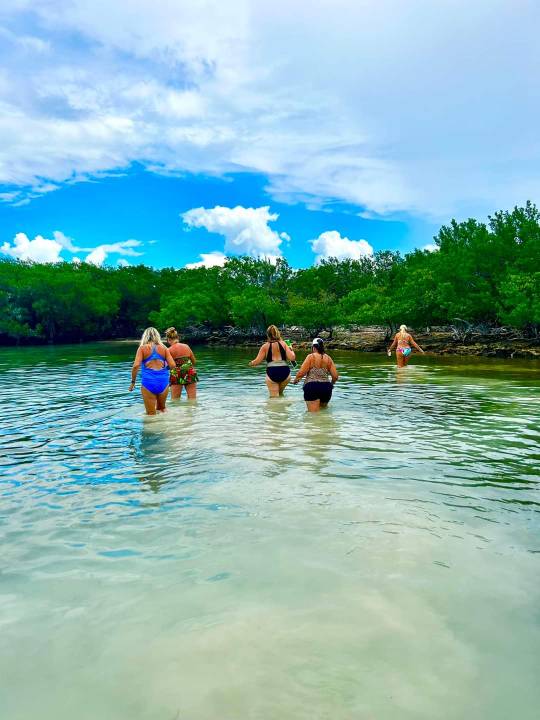
Wade up with Capt Rob and explore Indian Key. Abandoned in the 1840’s this tiny Island was once the 2nd wealthiest community in the United States. Ruins of the city still exist 200 years later. Just one stop of the day among many.
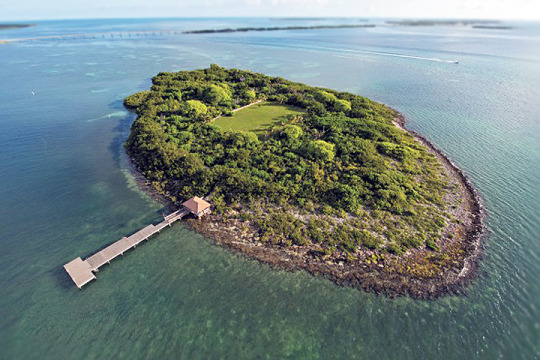
History
Native Americans began visiting and living on Indian Key around A.D. 800, and were likely a submissive tribe to either the Tequesta or Calusa chiefdoms, however, the exact nature of the relationship between the Keys Indians and these other groups has yet to be defined. Of interesting note is the fact that even in the 1840s and 50s, the Indians around the Keys were called "Spanish Speaking Indians" and not identified as Seminole of Miccosukee.
0 notes
Text
Countertop Contractor in Tampa, FL
Countertops are a key component of any kitchen, bathroom, or workspace. They provide a work surface for various tasks, such as food preparation, cooking, or other activities. Many countertops include cabinets, drawers, or shelves, providing additional storage space for utensils, cookware, or other items, and come in a variety of materials, colors, and finishes to suit different styles and preferences. They are often subject to wear and tear, so durability is an important function, and should be able to withstand heavy use, exposure to heat and moisture, and frequent cleaning. Check out Quality Granite and Stone Works if you're looking for a professional countertop contractor in Tampa, FL. Its owner has years of experience as a stone foreman and offers everything from basic granite and cabinetry to high-end, pricey designer options.
Kitchen Remodeling Contractor in Tampa, Florida
Kitchen remodeling can be a complex and involved process, but it can also provide numerous benefits, such as improving the functionality and value of the home, as well as enhancing the overall aesthetic appeal of the space. It involves updating and redesigning the existing kitchen space to improve its functionality, efficiency, and overall aesthetics. Kitchen appliances, worktops, cabinetry, flooring, lighting, plumbing, and other fixtures may be replaced or upgraded as part of the process. Hire a kitchen remodeler from Quality Granite and Stone Works if you’re looking for a professional to handle your kitchen remodeling project. They install countertops, cabinets, and flooring, and also do everything in between.

The History of Tampa, Florida
Tampa, FL was inhabited by various Native American tribes, including the Tocobaga and Calusa before the arrival of Europeans. In the 16th century, Spanish explorers arrived in the area and established a settlement called "La Bahía del Espíritu Santo" (the Bay of the Holy Spirit), which later became known as Tampa Bay. However, it wasn't until the mid-1800s that Tampa began to develop as a city. One of the most significant events in Tampa's history was the arrival of the railroad in the 1880s, which brought an influx of people and commerce to the city. In the early 20th century, Tampa played a prominent role in the Spanish-American War, with the city serving as a base for the U.S. military. The city continued to grow and develop in the mid-20th century, with the establishment of several universities and the growth of the tourism industry.
Busch Gardens Tampa Bay
Busch Gardens Tampa Bay is a 335-acre African-themed park that features thrilling roller coasters, family rides, live entertainment, and more than 12,000 animals from around the world. Guests can explore the Serengeti Plain, a 65-acre open-air habitat, and take a safari tour to get up close and personal with some of the park's animals. It also offers a variety of dining options, shopping experiences, and special events throughout the year. The facility has a play area for the kids to explore, an onsite bar, and a restaurant for visitors to grab a bite. The park also offers active military discounts and is wheelchair- and LGBTQ-friendly too.
Walmart is Becoming More Popular in Tampa Bay
Walmart was founded in 1962 by Sam Walton and has since become one of the largest retailers in the world, with over 11,000 stores in 27 countries. It is known for its low prices and wide selection of goods, including groceries, clothing, electronics, and home goods. The company operates both brick-and-mortar stores and an online shopping platform, making it accessible to customers around the world. In addition to its retail operations, Walmart also operates a number of subsidiary companies, including Sam's Club, a warehouse club chain, and Jet.com, an e-commerce company. The company is also committed to sustainability and has set ambitious goals for reducing its greenhouse gas emissions and promoting sustainable agriculture practices. Click here to read how it ranks in Tampa FL.
Link to maps
Busch Gardens Tampa Bay
10165 McKinley Dr, Tampa, FL 33612, United States
Get on I-275 S from E Busch Blvd
10 min (3.1 mi)
Continue on I-275 S to FL-60 W/E State Rd 60 W. Take exit 2A from FL-60 W/E State Rd 60 W
12 min (11.8 mi)
Continue on FL-60 W/E State Rd 60 W to your destination
3 min (1.4 mi)
Quality Granite & Stone Works, Inc.
3030 N Rocky Point Dr Ste 150A, Tampa, FL 33607, United States
1 note
·
View note
Text
Books by Clint Bennett: The Jesuit Warrior and Jason the Slave Warrior
Clint Bennett, Award-winning Author
A fourth-generation Floridian, whose family lived and thrived in the southern part of the Okefenokee swamp near Jasper, Florida, Clint Bennett was born in Dunedin, Florida and moved to Homosassa in 1976.
During four years in the U.S. Navy, he had the opportunity to tour the countries bordering the Mediterranean. Spain was one of his favorite ports of call. Up from the port was a Jesuit monastery, and Clint met and befriended several Spanish Jesuits, learning about their culture and history, especially the horrors of the Spanish Inquisition.
Three topics have always fascinated Clint: the horrendous suffering of the Europeans during the Inquisition, the impact the indigenous tribes of Florida by the arrival of Europeans, and the life and culture of the west Central Florida indigenous populations.
The Jesuit Warrior
After retiring from his professional writing job in 2000, Clint seriously researched and studied the Nature Coast area’s indigenous culture to begin creating his first novel, “The Jesuit Warrior,” a work of historical fiction that tells the story of a disillusioned Jesuit student living in Valencia, Spain during the Spanish Inquisition.
After witnessing a personal horror that causes him to question the teachings and agenda of the Jesuit priests, he boards a ship that will deliver slaves to central Florida. He is captured by the native people in Crystal River. Using his Jesuit medical training as an asset, he becomes a member of the Calusa village, eventually helping them survive attacks by the French and Spanish slavers.
Set in the Nature Coast, from Aripeka to Steinhatchee, including Crystal River and Homosassa, the novel is a wonderful work of historic fiction that grips the reader and teaches about the Calusa, the Timuc and the Appalachia Indian tribes that once thrived on west central Florida’s shores.
There are five-star reviews of his work on Amazon, Barnes and Nobel and other retailers.
Jason, The Slave Warrior
Next, Clint wrote, “Jason the Slave Warrior,” which begins in New Orleans, and is the story of a young slave and his wife who escape their masters during a hurricane. They steal a sailboat, heading for “a place in central Florida where the slavers are afraid to go.” The two make their way to crystal River, where they are welcomed into the Calusa tribe as honored members. Martha is a renown healer, and Jason a welcome translator and who becomes a valued warrior. The geographical setting for the book is primarily Crystal River, the Homosassa River, Steinhatchee north to Deckle – and south to Tampa, Florida. The Calusa, the Timuca, and the Appalachia Indian tribes and their culture are heavily described in this gripping historical fiction novel.
After ordering one, or both, of these novels, email Clint by clicking here to make arrangements for him to autograph your copy.
More About the Author, Clint Bennett
“I was born in Dunedin, Florida in 1945 and have fished and explored the waterways from Dunedin to Steinhatchee since I was old enough and strong enough to hold a paddle, a set of oars, or operate an outboard motor. I have canoed, camped, and explored most of the Suwannee River from the Okefenokee Swamp to Branford, Florida. Today I live in Crystal River, Florida with my wife and we continue to fish and explore the areas described in my books. I will gladly sign and personalize copies of my books,” Clint explains.
"During four years in the U.S. Navy, I had the opportunity of tour the countries bordering the Mediterranean Sea. Spain was one of my favorite ports of call. The squalid conditions in Spain during the early 18th century are accurate as described. My experiences in Europe helped to further my interest and research into the Spanish Inquisition and the numerous diseases and plagues that so devastated Europe for centires. I have also spent time in South Africa where I became interested in the horrors experience by the slaves and the savagery of their captors."
Read the full article
0 notes
Text
Apartments For Rent In South Tampa
M South offers elegant one, two, and three-bedroom apartments that have dramatic living areas with high ceilings, fully functional kitchens, luxurious baths, and roomy walk-in closets. It boasts incredible community features, such as a social clubroom with a game table, big screen TVs, and a kitchen, a roomy fitness facility and an outdoor bar, private cabanas by the pool, and a dog park with a washing station. Moreover, it offers special services to meet the needs of the military, corporate and single travelers, and families. You can choose from furnished and corporate units, and they provide solutions to fit every budget. So, make the right move and choose M South if you're looking for apartments for rent in South Tampa.
South Tampa Apartments For Rent
Renting an apartment can be an exciting experience, but it can also be stressful if you are not prepared. Before you start looking for one, figure out how much you can afford to pay for rent each month. In most cases, it shouldn't be more than 30% of your monthly income. Consider the location of the apartment and its proximity to your work or school, as well as other amenities such as grocery stores, restaurants, and public transportation. Carefully read the lease agreement and make sure you understand all the terms and conditions. If there is anything you are unsure of, ask the landlord to clarify. If you're looking for South Tampa apartments for rent, you can never go wrong with M South. You'll love its numerous amenities, which include a resort-style pool and modern fitness center, as well as a beautifully designed resident lounge with billiards and an amazing dog park and agility course. You'll definitely look forward to coming home each day at M South.

The History of Tampa, FL
The earliest inhabitants of the Tampa Bay area were Native American tribes, including the Tocobaga and Calusa people. They were hunter-gatherers who lived off its abundant natural resources, including fish and shellfish from the bay and rivers, and game from the surrounding forests. In the early 16th century, Spanish explorers led by Ponce de Leon arrived in the Tampa Bay area, and by the mid-16th century, the Spanish had established a number of settlements in the region. They introduced cattle and horses to the area, which eventually became a major industry in Florida. In the 19th century, Tampa began to grow as a major port city. The city's location on the Gulf of Mexico made it an ideal place for trade and commerce, and the completion of the Tampa Bay Hotel in 1891 helped to establish the city as a major tourist destination.
Henry B. Plant Museum in Tampa, FL
Railroad tycoon Henry B. Plant first constructed the Henry B. Plant Museum in 1891 as the Tampa Bay Hotel, which functioned as an opulent winter retreat for the rich. It was designed by architect John A. Wood and features Moorish Revival architecture, with minarets, domes, and arches. After the hotel closed in 1930, the building served as a college and military barracks before being acquired by the City of Tampa in 1941. In 1974, the building was designated a National Historic Landmark and was subsequently restored and opened as a museum in 1987. It features exhibits and artifacts related to the hotel's history and its role in shaping Tampa's growth and development. Visitors can also see the restored rooms and furnishings of the hotel, including the grand salon, the dining room, and the guest rooms. The museum also conducts several activities and educational programs for guests all year long.
World's Largest Bounce House Inflates At Florida State Fairgrounds
People, especially children, enjoy bounce houses because they provide a fun and exciting way to play and exercise. The feeling of bouncing up and down, jumping, and flipping around can be thrilling and entertaining for kids and adults alike. Bounce houses are typically designed with safety in mind, with soft, inflatable walls and floors that can cushion falls and prevent injuries. It can be a great way for children to interact and socialize with each other, as they can play and jump together in a safe and controlled environment. Parents can also supervise their children while they play, giving them peace of mind that their kids are playing in a safe environment. Do you know that Florida has just given rise to the largest bounce house in the world? Read more here.
Link to maps
Henry B. Plant Museum
401 W Kennedy Blvd, Tampa, FL 33606, United States
Head south on UT University Dr toward Frederic H. Spaulding Dr/N University Dr
246 ft
Turn right onto W Kennedy Blvd
Pass by DaVita Kennedy Boulevard Dialysis (on the right in 1.1 mi)
1.9 mi
Use the left 2 lanes to turn left onto Henderson Blvd
Pass by Bell Henderson Team | Tampa Real Estate (on the left in 0.6 mi)
2.1 mi
Continue onto S Manhattan Ave
Destination will be on the left
2.3 mi
M South
5110 S Manhattan Ave, Tampa, FL 33611, United States
0 notes
Text
0 notes
Note
I have a question? Let’s say if a Cuban spiritualist was from Pinar del Rio and they have indigenous ancestry however sources say the Ciboney Taino inhabited Pinar del Rio and other sources say the Guanahatabey inhabited Pinar del Rio and other sources say both inhabited land, then which source should that person trust? And do we have information on the Guanahatabey spirituality?
Hey! This will be a long answer about Indigenous Caribbean Identity so check below the cut for more!🌺🌴🐠🦜🌀🦩🥭🍋🟩🥥
This is a complex question. I would say the biggest thing to remember is that the term “Taíno” is an umbrella term to reference many different ethnicities of Arawak-Speaking Indigenous Caribbeans. There were many types of Taíno people, including Timucua and Tequesta in Florida, Lucayo in the Bahamas, Ciguayo in Kiskeya and Igneri in Boriken.
As for the term Ciboney, some say it was a separate tribe but the general consensus is that they were a Taíno ethnicity with a separate but mutually intelligible language. They were connected culturally to groups from Jamaica, Florida, Bahamas and modern day Haiti, where as Taínos of the eastern Caribbean were closer in culture. They also had language connections to the Macorix and Guanahatabeys being Waroid languages, aka where we get the term Guajiro. So the Ciboney are a Taino-Arawak group that had ancestrally mixed with the Waroid Guanahatabeys but still maintained moslty Taíno culture.
There were also many other groups who weren’t Taíno. The most well known is the Kalinago, but the Guanahatabey is one from Cuba that is also known to actually have been in Cuba BEFORE the Taínos got there. They had a culture very similar to the Calusa of Southwest Florida. And this is all pre-Colonization, so these groups were already interacting and moving around for thousands of years.
Then with colonization, many Native groups were transported to other places, and in Cuba specifically we have Taíno migrations from the East to the West very early on. We also have Natives from Florida and Mayans from Mexico, and more natives being brought in to cuba and intermarrying with other ethnic groups. These migrations all affected indigenous communities and led to alot of cultural exchange and mixture, as well as loss.
As for Indigenous Cuban Identity, I claim Taíno or Ciboney Taíno because after colonization any remaining Guanahatabeys were assimilated to Taíno Cimarron (maroon/runaway) groups. I consider Guanahatabeys part of my ancestors but I choose to identify as Taíno or simply Indigenous Caribbean. My family all identify as Guajiros, as do I, which is more a lifestyle but definitely has ties to the Classic Taino, Ciboney and Guanahatabey traditions passed down.
As for trusting sources, I would say read EVERYTHING with a grain of salt. Academics often lack cultural nuance and understanding, which can mean alot of their inferences are flat out wrong so try to stick with confirmed info. It is confirmed the Tainos and Guanahatabeys and Ciboneys all moved around and lived in the same parts of the Island at the same time and separately. As for non-academic sources, just be aware that much of what is passed off as Taino or Indigenous Caribbean culture is actually just Pan-Indigenous or straight up a different culture.
Trust yourself, use your intuition and discernment and always be committed to improving and striving for a culturally authentic, fulfilling and respectful practice that is well rounded in both Spirituality and Community! Whether that is with a yukayeke, with the Indigenous tribes you live near locally or with your own indigenous family and friends! So many Yukayekes in the Modern Taíno community try to claim superiority or that they have all the secrets knowledge and the only correct beliefs. You should be weary of anyone trying to restrict you when their own elders often are reconnecting or were just scholars before becoming pop-up Caciques.
If you go to the Cuban version of Wikipedia, when it is active, you can find better information on the Guanahatabey and Ciboney than on American wiki. Try researching the terms ‘Guayabo Blanco’ and ‘Cayo Redondo’ for information on Ciboney culture and beliefs, and how even within this sub-group there were MORE sub-groups. As the Guanahatabeys were not a ceramic culture, we have very little info on them academically. Try researching Calusa beliefs as they had similar environments and were connected through trade routes.
If you have any more questions I would love to answer them but you should ask them on insta or in chat so I can link easier and answer in more depth!!
My asks are always open still tho :)
Luz y progreso
#witchcraft#florida#bioregional animism#bruja#brujeria#florida witch#santeria#swamp witch#witch#traditional witchcraft#taino spirituality#taino#ciboney#indigenous#floridasprings#agua dulce#caribbean#indigenous caribbean#carib#caribe#kalinago#calusa#seminole#native american
4 notes
·
View notes
Text
Miami Nicknames: 740+ Cool And Catchy Nicknames
Miami Nicknames: 740+ Cool And Catchy Nicknames
It is a mostly female-neutral Native American name derived from the Calusa, which means big water in Native Americans.
As one of Florida’s Native American Tribes, The Calusa is located on the west coast of the state. It is already a beautiful name to call a city in Miami. Another way of saying it is Mee-ami.
So for you, we compiled creative nicknames for your adorable and beloved baby girl…

View On WordPress
0 notes
Note
About Native American archaeology, I grew up on an island that was part of the calusa tribe territory and there was traces of them everywhere! All you had to do was look!! My favorite was a MASSIVE “trash mound” (idk if that’s correct but that’s what it was called) where you could dig to find stuff like beads or shell hammers! It annoys me so much when ignorant people imply that natives sat around and did nothing the 7000+ years they were here before European colonizers
We would call that a midden!
There's so much stuff that Native people did and made, but sometimes it's hard to find because there's so much space in North America as opposed to the very dense population of Europe.
Also there are still people making amazing crafts that should get equal attention. Incredibly skilled artisans that should be celebrated and supported!!! And languages and cultural traditions!!!
Really, it's that guy's loss for writing off a huge number of amazing cultures.
-Reid
45 notes
·
View notes
Photo

If all US states and cities used names of Native American Origin.
by u/Aofen
Note, only some of these names are in current use in any native language. Most of them derive from settlements that formerly existed on the site of the modern city, but many others are simply the name for a nearby geographical feature or tribe that inhabited the area. Some of the state names, such as Tsenacomaca, are based on actual native names for large areas of land, but most are simply the name of the predominant tribe in the area (Iowa, Texas, Shoshone, Calusa, etc.)
606 notes
·
View notes
Text
Archaeologists verify Florida's Mound Key as location of elusive Spanish fort

Florida and Georgia archaeologists have discovered the location of Fort San Antón de Carlos, home of one of the first Jesuit missions in North America. The Spanish fort was built in 1566 in the capital of the Calusa, the most powerful Native American tribe in the region, on present-day Mound Key in the center of Estero Bay on Florida's Gulf Coast.
Archaeologists and historians have long suspected that the fort, named for the Catholic patron saint of lost things, was located on Mound Key. Researchers have been searching for concrete evidence in the area since 2013.
"Before our work, the only information we had was from Spanish documents, which suggested that the Calusa capital was on Mound Key and that Fort San Antón de Carlos was there, too," said William Marquardt, curator emeritus of South Florida archaeology and ethnography at the Florida Museum of Natural History. "Archaeologists and historians had visited the site and collected pottery from the surface, but until we found physical evidence of the Calusa king's house and the fort, we could not be absolutely certain." Read more.
158 notes
·
View notes